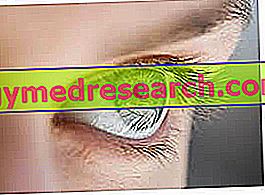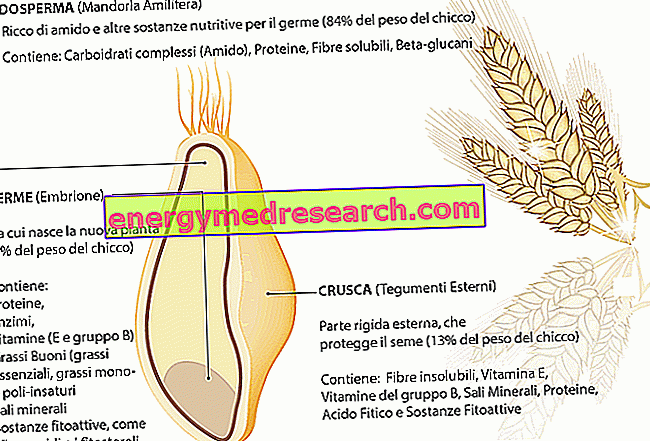What is Nystagmus?
Nystagmus is a condition characterized by the involuntary, rapid and repetitive movement of the eyes. The disorder is mainly caused by a dysfunction of the areas of the brain that control eye movements.

The nystagmus movement goes from side to side, but the eyeballs can also swing up and down or in a circular fashion. Nystagmus can be caused by numerous causes: congenital, idiopathic or secondary to a pre-existing neurological, vestibular or visual disorder. Involuntary eye movement can also be induced by temporary disorientation or by the effect of some antidepressant or antiepileptic drugs, alcohol and drugs.
Depending on the cause, nystagmus can affect one or both eyes. Often, those affected are not aware of their eye movements, but the vision can be altered depending on the severity of the disorder.
Types of nystagmus
It is possible to distinguish numerous types of nystagmus, classified according to the characteristics with which the disorder occurs; some of these are:
- Pathological nystagmus . Pathological nystagmus is typically divided into congenital and acquired.
- Congenital nystagmus . Congenital nystagmus (or early onset) is present at birth and occurs in the first months of life, usually between six weeks and three months of age. Children with nystagmus generally see similarly to other subjects of their age. The condition is mild and not progressive. Congenital nystagmus does not require treatment, although corrective lenses and refractive surgery can help reduce the visual difficulties encountered.
- Acquired nystagmus. The disorder can also develop over a lifetime (acquired nystagmus), as a result of serious health conditions and for a variety of other causes. Unlike congenital nystagmus, adults often report an unstable and oscillating perception of the visual field (oscillopsia). In acquired cases, treatment will focus on the underlying cause.
- Physiological nystagmus. Physiological nystagmus is a form of involuntary eye movement evoked in a healthy subject as part of the vestibulo-ocular reflex, which stabilizes images on the retina during a rapid movement of the head. This can be further subdivided into optokinetic nystagmus (depending on the eye), vestibular nystagmus (relative to the inner ear, which manages the balance) and dissociated (concomitant movements of the two eyes, but with different amplitudes). The optokinetic nystagmus is evident, for example, when an object is observed through the window of a car or train.
Causes
The direct cause of the disorder consists in the instability of the system that controls the movement of the eyes (central nervous system, ocular or vestibular). The eyeballs move instinctively when the head moves; this allows you to stabilize the image you are focusing on and allows you to see a sharper image. In people with nystagmus, the areas of the brain that control eye movements do not function normally. Furthermore, the disorder can be caused by pathological events that affect the labyrinth, the part of the inner ear that allows movement to be perceived and spatial positioning.
In early childhood, nystagmus can be caused by an eye problem or dysfunction in the visual pathway from the eye to the brain. In other cases, the disorder can be found in association with a wide range of ocular pathologies, such as cataract (lens opacity), strabismus (eye misalignment), glaucoma, albinism and some retinal conditions.
Nystagmus can also represent a clinical sign of congenital diseases that cause multiple disabilities, such as Down syndrome. Acquired nystagmus, which develops over the course of life, may instead be associated with other eye diseases, serious medical conditions (multiple sclerosis, head injury, etc.) or use of some drugs, including sedatives and antiepileptics (such as phenytoin). Stroke is a common cause of nystagmus acquired in older people.
Among the known causes of nystagmus are included:
- Genetic inheritance: nystagmus can be inherited and a positive family history increases the risk of developing the disease; Dominant, recessive and X-linked transmission models have been reported. The severity of nystagmus often varies among the members of a family involved;
- Poor development of eye control: it can be caused by an eye disease or a visual problem arising during childhood, such as bilateral optic nerve hypoplasia or congenital cataract;
- Albinism (lack of skin pigmentation);
- Eye diseases: cataract, amblyopia, strabismus, degeneration of the optic nerve, coloboma and serious refractive errors (astigmatism or myopia) etc .;
- Pathologies of the inner ear (vestibular apparatus): infections, benign paroxysmal positional vertigo, inflammation, etc .;
- Some brain tumors (rare cause of acquired nystagmus);
- Diseases of the central nervous system and pathological conditions (which present nystagmus as a clinical sign): Ménière's syndrome (involves balance problems), optic nerve hypoplasia, Leber's congenital amaurosis, multiple sclerosis, Down's syndrome or stroke;
- Head trauma: common cause of acquired nystagmus in younger people;
- Some drugs (anticonvulsants or sedatives, benzodiazepines and lithium-based drugs);
- Alcohol or drug abuse;
Some patients with nystagmus do not have eye, brain or other health problems. In these cases, the condition is called "idiopathic nystagmus", meaning that the cause of the disorder is unknown.
Symptoms
The main symptom of nystagmus is the involuntary movement of one or both eyes. Usually, the trajectory goes from one side to the other (horizontal nystagmus), but it can also be from top to bottom (vertical nystagmus) or circular (rotary nystagmus). The rhythmic rhythm of eye movements can be further divided into slow and fast sequences. The slow phase is typically physiologically or pathologically induced by a vestibular stimulus; the rapid phase is instead a movement induced by the oculomotor system, which controls the movements of the eyes. For those born with this condition (congenital nystagmus), the symptoms are generally mild.
In addition to the movement of the eyeballs, the symptoms of nystagmus can include:
- Sensitivity to light;
- Vertigo and loss of balance;
- Difficulty seeing in the dark;
- Vision problems ;
- Abnormal head position: some people experience reduced eye movement if they maintain certain head positions;
- Oscillopsia: unstable and oscillating perception of the visual field.
The severity of the nystagmus can vary according to the direction of the gaze, in other words the eyes oscillate more when they try to focus images that are in certain positions (for example: peripheral or moving). To compensate for vision difficulties, it is common for people with nystagmus to tilt or turn their head to reach the "zero point". In this position, the movement of the eyes is reduced or slowed down and the vision is better, but it is also accompanied by severe muscle pain in the neck (torticollis) and the shoulders.
How nystagmus affects vision
- The most common complication of nystagmus is the reduction of visual function, which affects people in different ways: some may present only a slight reduction in visual acuity, while others present a serious disability. The visual development of a child with nystagmus is quite variable. In children, nystagmus can lead to problems with learning and interaction with others.
- Most people who have nystagmus from childhood are not affected by an unstable and oscillating perception of the visual field (oscillopsia), as their brains tend to adapt. Conversely, it is highly unlikely that people with the disorder in adulthood see clearly and regularly. Subjects with acquired nystagmus are therefore influenced by oscilloscopy.
- Congenital or early onset nystagmus is permanent, but does not tend to worsen over time. However, an underlying eye condition can worsen depending on your clinical features and how it is managed. Treatment of the underlying condition can improve the symptoms associated with nystagmus.
- Nystagmus can cause vision changes throughout the day and risks being aggravated by emotional and physical factors such as stress, fatigue, nervousness or an unfamiliar environment. People with nystagmus can tire more easily than others, due to the ongoing effort to focus the observed images.
- Many people with nystagmus can also read very small characters, if they are close enough to their eyes. The perception of depth is usually noticeably reduced and can make people slower or clumsier than normal. Balance can also be affected. This effect can make it difficult to use stairs or follow a path with uneven surfaces.
- Some patients with nystagmus nod in repetition, probably because the movement of the head partially compensates for that of the eyes.
- Nystagmus is not painful and does not lead to progressive vision loss. Any problems arising from the congenital condition or early onset tend to improve when the vision stabilizes around the age of five or six. During childhood, sight stimulation seems to help children better use their visual function.
Diagnosis
All children and adults with nystagmus must be evaluated by an ophthalmologist and a general practitioner to determine if there is any association with other pathological conditions. The complete eye examination involves the analysis of the internal ocular structures with an ophthalmoscope, the examination of the vision and the recording of eye movements, to determine the type of nystagmus and the characteristics of the movements. The ophthalmologist also examines the eye for other visual problems, which may be related to nystagmus, such as strabismus, cataract or abnormal optic nerves or retina. One way to observe the nystagmus movement is to run the patient for about 30 seconds, stop it and then ask to fix an object; if the disorder is present, the eyes move slowly first in one direction, then quickly move in the opposite direction. Another way to test the response of the vestibulo-ocular reflex is to produce a caloric vestibular stimulation (caloric reflex test), which represents an attempt to induce nystagmus by pouring cold or lukewarm water into the ear. In the positive case, an ocular compensation movement occurs, in the absence of a change in the position of the head.
Other tests that can be used to diagnose nystagmus are:
- Ear examination, including a hearing test;
- Neurological examination;
- Electrooculography (uses electrodes to record eye movements);
- Magnetic resonance imaging (MRI) and computed tomography (CT) of the brain.
Different types of nystagmus can be inherited. To investigate the likelihood of the patient transmitting the disorder to the next generation, a specialist must first make an accurate diagnosis of the underlying disease.
Treatment
Nystagmus cannot be cured, but the extent of the disorder can be reduced through different treatments. In some acquired cases, removing the cause of nystagmus, such as stopping a drug or eliminating alcohol or drugs, can eliminate the problem. However, very often nystagmus is a permanent condition.
The treatment options for reducing nystagmus and improving eyesight are as follows:
- Glasses and contact lenses do not eliminate nystagmus, but may support visual function and should be worn to correct other concurrent vision problems.
- Aids for the visually impaired can help improve vision. These may include large characters or high-contrast materials, good lighting and magnifying devices.
- Occasionally, surgery is performed to alter the position of the muscles that move the eye and reduce the extent of nystagmus. Eye muscle surgery can improve vision but does not completely correct the disorder.
- Some drugs are used to reduce the severity of nystagmus, but their use is often limited due to the potential side effects. Botulinum toxin A injections may be useful for some individuals suffering from severe vision instability. These allow you to temporarily relax the eye muscles. Other drugs used for some types of nystagmus include the intake of muscle relaxants and antiepileptics.



